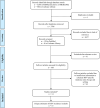Rates of Medically Attended RSV Among US Adults: A Systematic Review and Meta-analysis
- PMID: 35873302
- PMCID: PMC9301578
- DOI: 10.1093/ofid/ofac300
Rates of Medically Attended RSV Among US Adults: A Systematic Review and Meta-analysis
Abstract
Background: Adult respiratory syncytial virus (RSV) vaccines are in the late stages of development. A comprehensive synthesis of adult RSV burden is needed to inform public health decision-making.
Methods: We performed a systematic review and meta-analysis of studies describing the incidence of medically attended RSV (MA-RSV) among US adults. We also identified studies reporting nasopharyngeal (NP) or nasal swab reverse transcription polymerase chain reaction (RT-PCR) results with paired serology (4-fold-rise) or sputum (RT-PCR) to calculate RSV detection ratios quantifying improved diagnostic yield after adding a second specimen type (ie, serology or sputum).
Results: We identified 14 studies with 15 unique MA-RSV incidence estimates, all based on NP or nasal swab RT-PCR testing alone. Pooled annual RSV-associated incidence per 100 000 adults ≥65 years of age was 178 (95% CI, 152‒204; n = 8 estimates) hospitalizations (4 prospective studies: 189; 4 model-based studies: 157), 133 (95% CI, 0‒319; n = 2) emergency department (ED) admissions, and 1519 (95% CI, 1109‒1929; n = 3) outpatient visits. Based on 6 studies, RSV detection was ∼1.5 times higher when adding paired serology or sputum. After adjustment for this increased yield, annual RSV-associated rates per 100 000 adults age ≥65 years were 267 hospitalizations (uncertainty interval [UI], 228‒306; prospective: 282; model-based: 236), 200 ED admissions (UI, 0‒478), and 2278 outpatient visits (UI, 1663‒2893). Persons <65 years with chronic medical conditions were 1.2-28 times more likely to be hospitalized for RSV depending on risk condition.
Conclusions: The true burden of RSV has been underestimated and is significant among older adults and individuals with chronic medical conditions. A highly effective adult RSV vaccine would have substantial public health impact.
Keywords: burden; incidence; pooled; summary; underestimated.
© The Author(s) 2022. Published by Oxford University Press on behalf of Infectious Diseases Society of America.
Figures

References
-
- Falsey AR, Hennessey PA, Formica MA, Cox C, Walsh EE. Respiratory syncytial virus infection in elderly and high-risk adults. N Engl J Med 2005; 352:1749–59. - PubMed
-
- Centers for Disease Control and Prevention. Respiratory syncytial virus (RSV) infection trends and surveillance . Available at: https://www.cdc.gov/rsv/research/us-surveillance.html. Accessed 4 November 2021.
LinkOut - more resources
Full Text Sources
Medical
Miscellaneous

